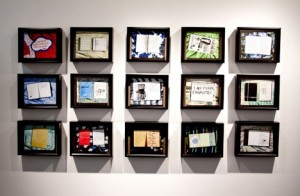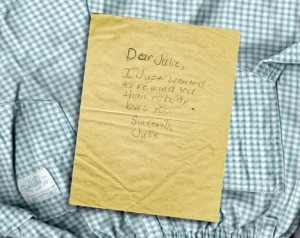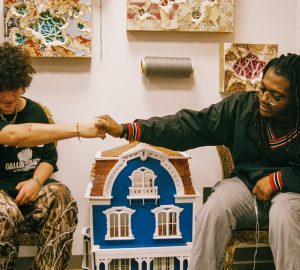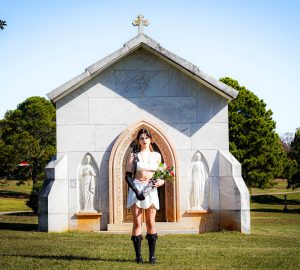
An artist is compelled to create for two reasons: one, to express themselves, and two, to connect with their audience. Many artists struggle with the concept of being authentically exposed and accessible for the sake of art. The ability to give herself fully to art is something third-year photography student Julie Sharpe didn’t know she could do until recently.
The third-year photography student was unsure what artistic path she would take once she began at SCAD, but within her first year she was enchanted by the art of photography. “I saw it as something that mattered in the bigger scheme of things,” Sharpe said.
Sharpe has been an artist since she was 7 years old. Her parents enrolled her in various art classes including dance, poetry and photography. While in her first photography class, Sharpe became transfixed with the different photographic apparatuses and intrigued by their nature.

Fast forward a little more than a decade, and Sharpe has grown into a photographer on the path of self-discovery. She says her work reflects an inner struggle, a never-ending search for independence. Her portfolio demonstrates the vulnerable and honest examination of an artist’s soul.
Sharpe’s breakthrough series, “Memoir,” is the result of a seminar course that she took this past winter with Professor Robert Stewart. Sharpe credits Stewart for challenging her to own her work. The course required students to single out a project to work on for the entire quarter. “I felt like that was the first time I really knew what it was like to be an artist, and now I don’t think I’ll be able to stop because there’s nothing that compares to that feeling at this point,” Sharpe said.
“Memoir” is a collection of Sharpe’s personal journal entries from the past 15 years. Fifteen mixed media box installations house her journals. Her honesty in these entries is unabashed and real, as Sharpe allows us into incredibly personal moments, such as harsh judgments she’s made on herself and broken-hearted poetry.
Sharpe’s portfolio also contains a series of self-portraits, “Displacement,” in which she is not only emotionally exposed, but physically, as well, demonstrating how committed she is in making authentic art. “[The process involved] confronting my control-freak nature and letting myself just be completely vulnerable,” Sharpe said.
She attributes part of that to the 4×5 large-format camera, which does not reveal what it has captured until the film is developed. The exercise was dependent on chance, and that challenged her to give up the control she usually exercises. The series not only empowered Sharpe as an artist, but also helped her grow as an individual.
“I can’t see myself being anything else besides an artist,” Sharpe said. Her commitment to exposing the heart of where her art comes from is powerful. Sharpe’s talents extend past photography and dive into the realm of existential self-discovery. What makes her interesting, is that as with all real artists, the two things are inseparable.
Editor’s note: This article has been revised to reflect the following correction:
Correction: April 8, 2011
The article about why artists create incorrectly spelled Julie Sharpe’s name in the photo caption.


























